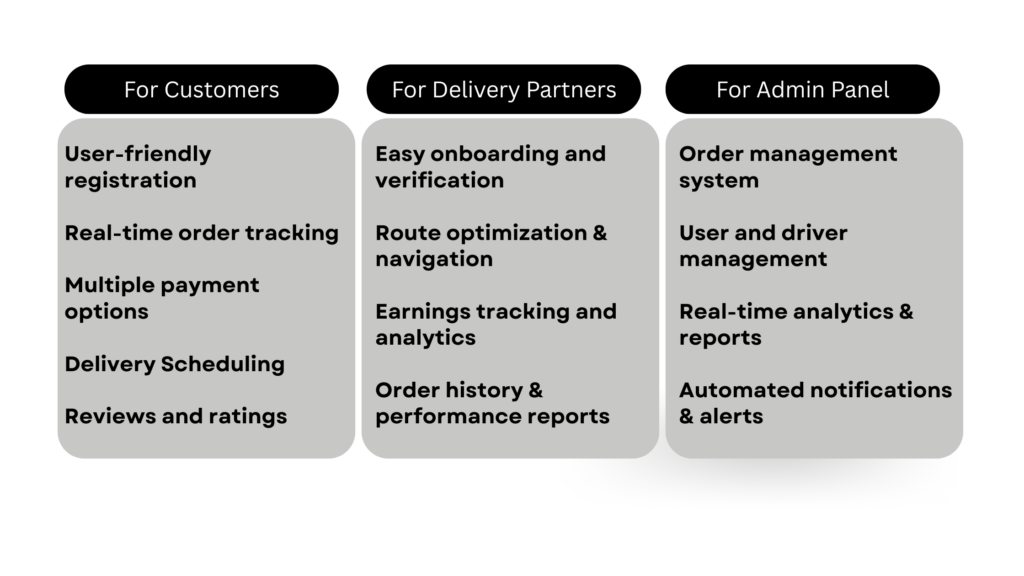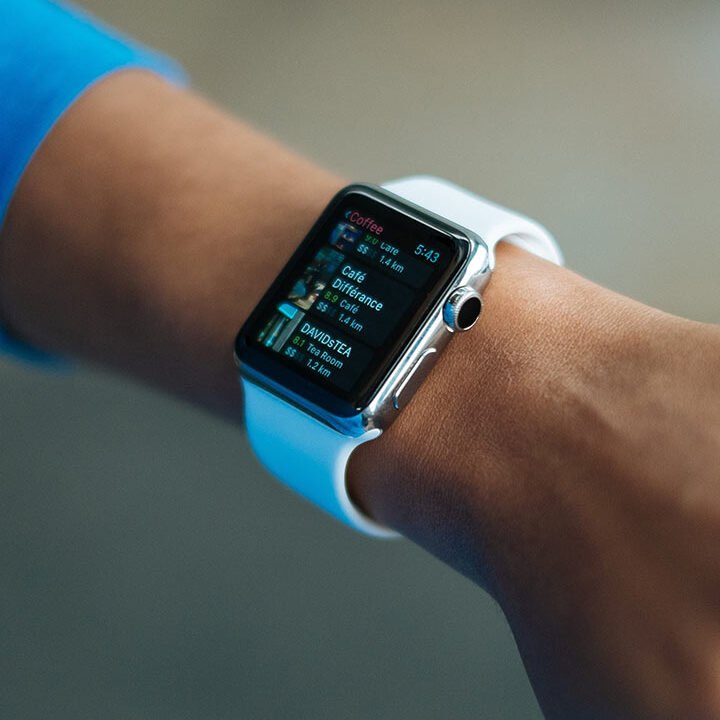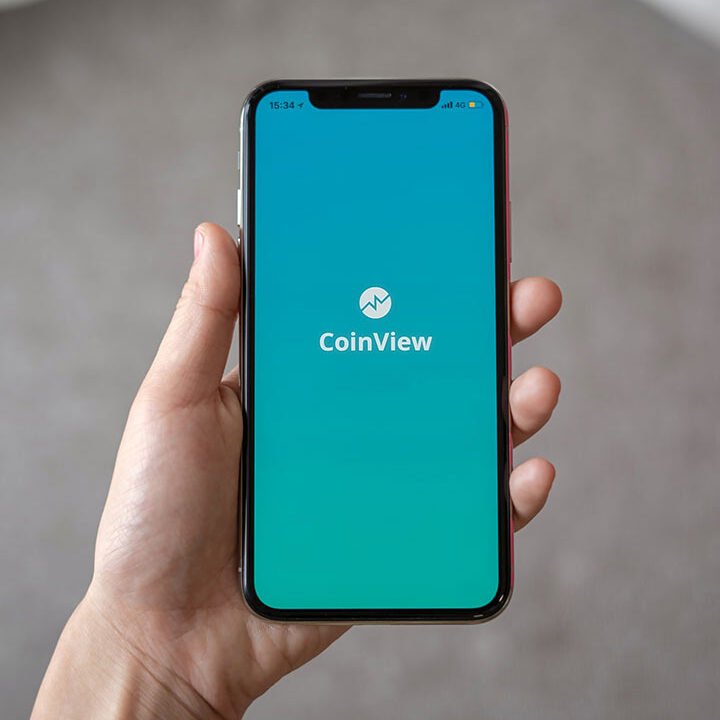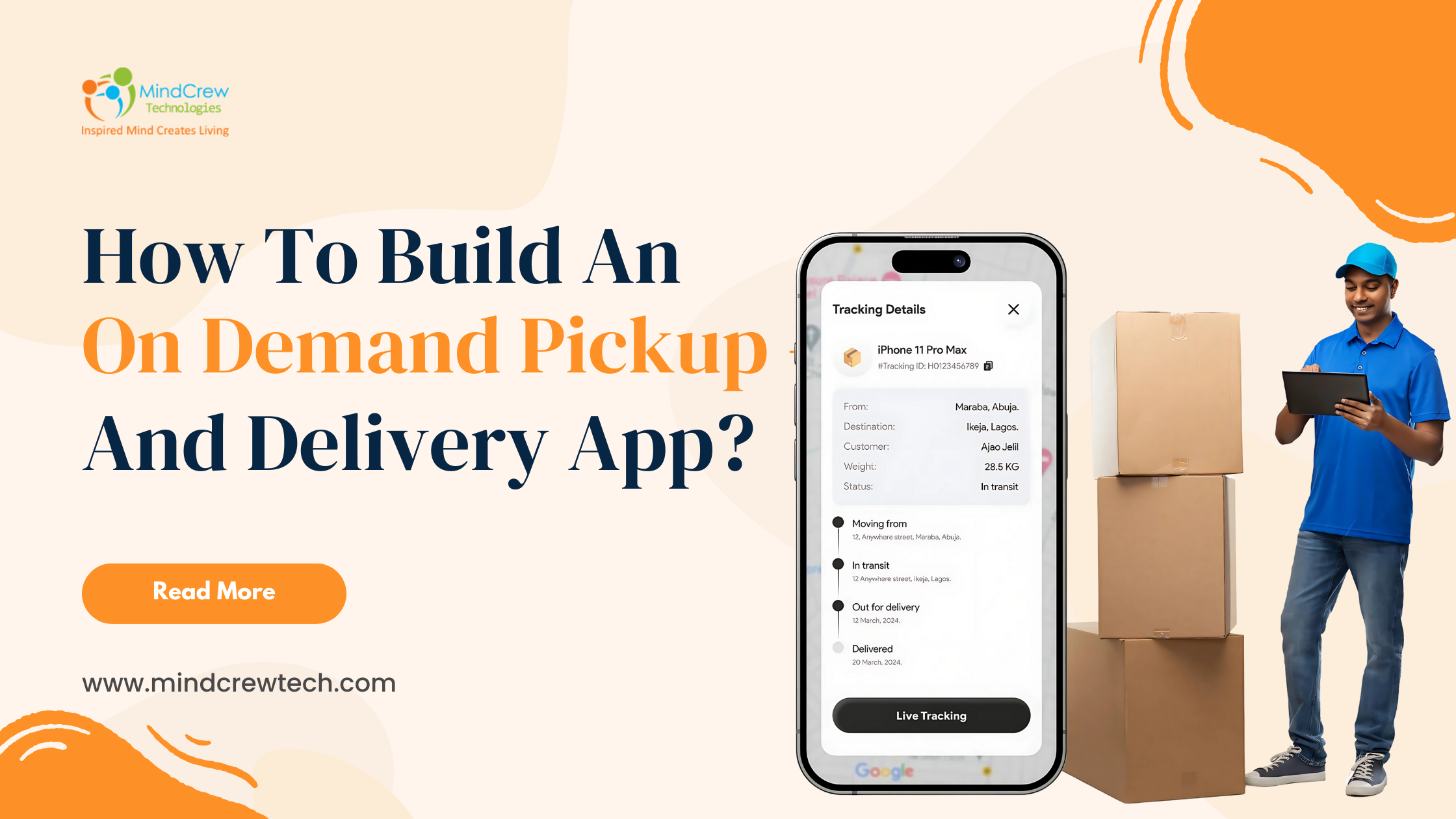How To Build An On-Demand Pickup And Delivery App?
Ever wished you could get anything delivered to your doorstep with just a few clicks? From groceries and medicines to important documents, today’s users demand instant solutions. That’s why on-demand delivery app development is booming, revolutionizing the way businesses meet consumer needs. With speed and real-time tracking now essential, businesses investing in on-demand delivery solutions are gaining a competitive edge.
But here’s the real question: How can you build a high-performing, feature-rich on-demand pickup and delivery app that attracts users and drives revenue?
If you’re an entrepreneur or app owner, creating a user-friendly app requires more than just an idea. You need to choose the right business model, integrate must-have features, select the best technology stack, and execute flawlessly.
This guide covers everything from mobile delivery app development steps to cost estimation and success strategies. Let’s dive in and turn your mobile delivery app idea into reality!
Overview of the On-Demand Pickup and Delivery App Ecosystem
The on-demand delivery app ecosystem has transformed logistics, making fast and seamless deliveries a standard expectation. According to industry reports, the global on-demand delivery market is projected to grow at a CAGR of 19.4%, reaching $10.6 billion by 2027.
With increasing consumer demand, businesses must develop delivery applications leveraging AI, GPS tracking, and automation to optimize routes, reduce delays, and enhance customer satisfaction. Leading brands like Uber Eats, DoorDash, DHL, and Instacart have already set the benchmark for digital-first, on-demand delivery web application solutions.
If you want to stay ahead in this evolving landscape, integrating mobile delivery app development into your business is essential.
Why Businesses Need an On-Demand Pickup and Delivery App
The rapid growth of eCommerce and online services has made fast and efficient app development for delivery services a necessity. Here’s why investing in on-demand delivery software is beneficial:
- Happier Customers, Stronger Loyalty: Faster deliveries with real-time tracking increase customer engagement and retention.
- Operational Efficiency: Automating order management reduces manual errors and operational costs.
- Scalability: Businesses can expand their reach and optimize logistics seamlessly.
- Increased Revenue: Multiple monetization models enable businesses to generate income beyond traditional sales.
By hiring dedicated mobile app developers, businesses can create a robust mobile app for courier services that ensures long-term profitability.
Identifying Your Niche and Business Model
Not all on-demand delivery apps are the same. Your business model will determine your app’s features, costs, and revenue streams.
Popular Niches for On-Demand Delivery Apps
- Food Delivery: Apps like Uber Eats, DoorDash, and Zomato cater to the growing demand for food deliveries.
- Courier & Parcel Delivery: Platforms like DHL and FedEx provide efficient mobile app for courier services.
- Grocery Delivery: Apps like Instacart and Amazon Fresh connect users with local supermarkets.
- Medicine & Healthcare Delivery: Solutions like Capsule and PharmEasy offer instant medication access.
- Laundry & Dry Cleaning Pickup: Urban-focused platforms like Rinse and Cleanly are gaining popularity.
Revenue Models to Consider
- Commission-Based: Charge a percentage per order from businesses or delivery providers.
- Subscription Model: Offer premium features for a monthly fee.
- Delivery Charges: Set flat or distance-based fees.
- Advertisements & Promotions: Generate income through in-app ads and promotions.
Choosing the right niche and revenue model forms the foundation of a successful pickup and delivery mobile app.
Key Features Every Pickup and Delivery App Must Have

For Customers
✔ User-Friendly Registration (email, phone, social media) ✔ Real-Time Order Tracking with ETA updates ✔ Multiple Payment Options (credit card, digital wallets, cash on delivery) ✔ Delivery Scheduling for preferred times ✔ Reviews and Ratings for service quality
For Delivery Partners
✔ Easy Onboarding & Verification ✔ Route Optimization & GPS Navigation ✔ Earnings Tracking & Analytics ✔ Order History & Performance Reports
For Admin Panel
✔ Order Management System for automated dispatch ✔ User & Driver Management Dashboard ✔ Real-Time Analytics & Reports ✔ Automated Notifications & Alerts
Step-by-Step Guide to Building an On-Demand Pickup and Delivery App
1. Market Research & Identify Your Niche
Analyze competitors, identify gaps in services, and define your target audience to select the right niche.
2. Define Your Business Model
Decide if your app will connect customers to delivery providers (like Uber Eats) or operate with an in-house fleet (like Amazon Fresh). Choose the best revenue model for profitability.
3. Choose the Right Features & Functionalities
Prioritize features for customers, delivery partners, and admins to ensure a seamless user experience.
4. Select the Right Technology Stack
- Backend: Node.js, Python, Ruby on Rails
- Frontend: React Native, Flutter
- APIs: GPS tracking, secure payment gateways, AI-driven route optimization
Consult industry experts if you lack technical expertise.
5. Partner With the Right Development Team
Hiring experienced developers ensures high performance, security, and scalability.
6. Develop and Test the MVP (Minimum Viable Product)
Launch an MVP with essential features, gather feedback, and iterate based on real-world insights.
7. Implement Robust Security and Compliance
Use end-to-end encryption, multi-factor authentication (MFA), and GDPR-compliant policies to protect user data.
8. Deploy, Market, and Scale
Use App Store Optimization (ASO), social media marketing, and partnerships to acquire users. Continuously optimize the app using AI-driven predictive analytics for improved delivery efficiency.
How Much Does It Cost to Build an On-Demand Pickup and Delivery App?
The development cost of an on-demand pickup and delivery app varies depending on your project’s specific goals, required features, team expertise, and the technologies involved. Businesses often choose between basic MVPs or advanced AI-powered platforms with custom mobile apps for delivery services and custom web apps for delivery. Consulting an expert team helps in providing an accurate estimation based on your scope.
Conclusion
With the on-demand delivery app development industry booming, businesses that don’t adapt risk falling behind. Whether launching a custom mobile app for delivery services, investing in a custom web app for delivery, or optimizing an on-demand delivery web application, businesses must integrate seamless logistics and technology for success.
To gain a competitive edge, follow a step-by-step approach: choose the right business model, integrate essential features, optimize user experience, and collaborate with top mobile app developers.
Are you ready to launch your on-demand delivery app? With the right strategy, you can build a powerful platform connecting businesses, customers, and delivery partners seamlessly. Start your on-demand pickup app development journey today and make an impact in the growing delivery industry!







